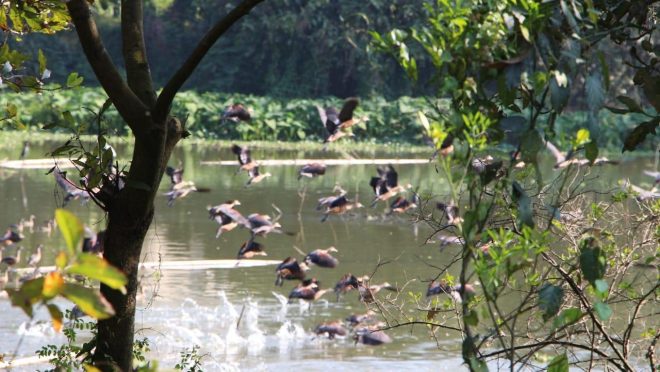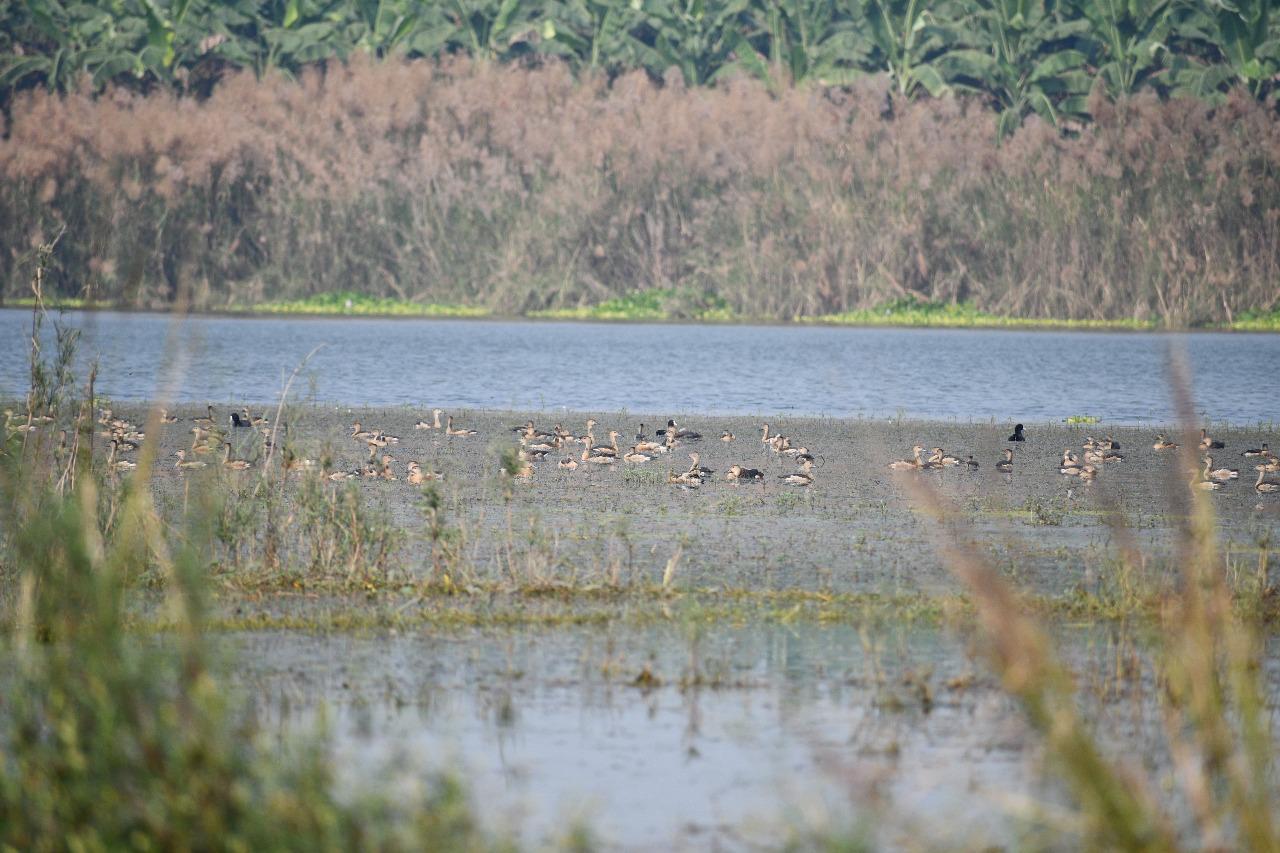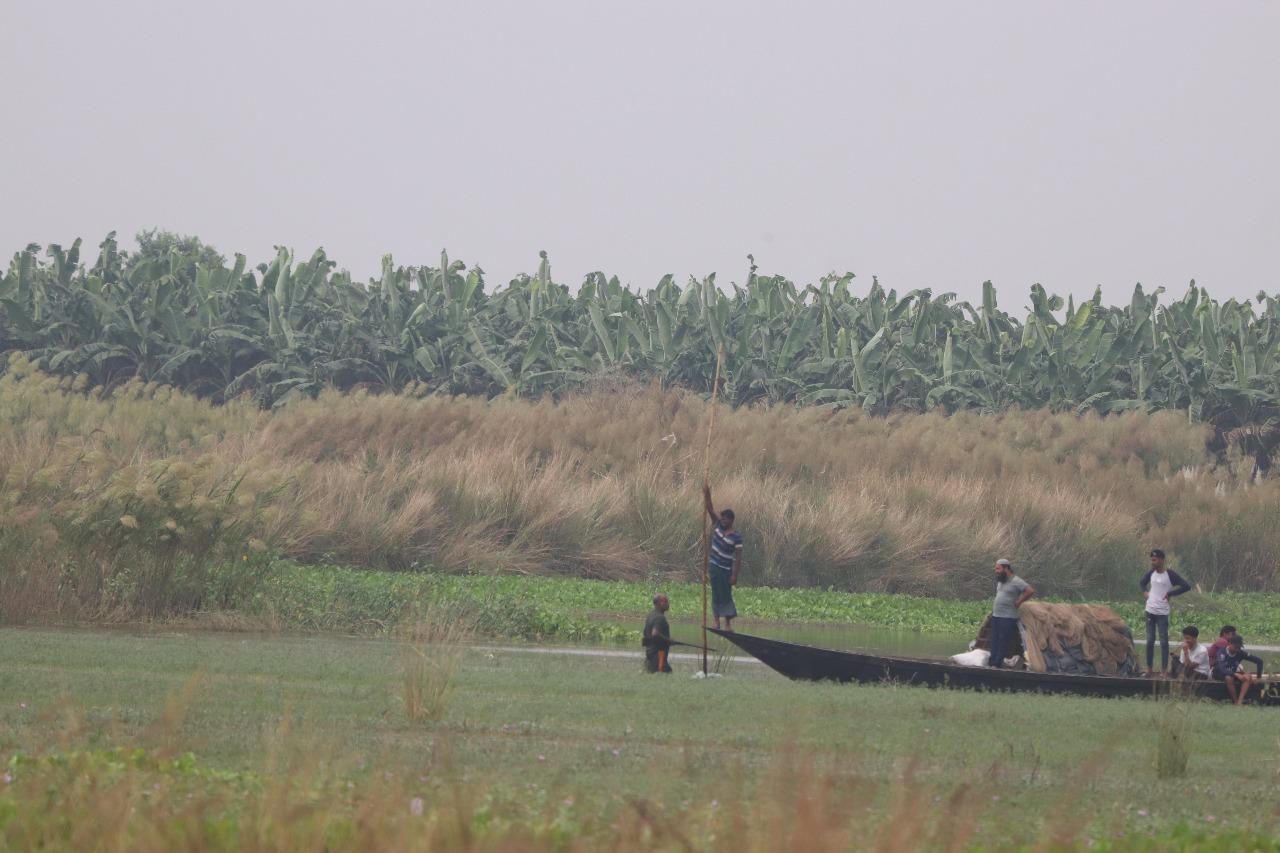World Migratory Bird Day: The necessity of our avian guests
World Migratory Bird Day: The necessity of our avian guests

11 October is World Migratory Bird Day. According to a study published in BioScience 2023, the total species among avian fauna in Bangladesh is just over 700, almost half of whom are migratory, meaning they are not native to our ecosystem rather they migrate from far away ecosystems and play a crucial role in conserving and maintaining the intricate balance of our own environment.
Bangladesh is well suited for such migratory birds, it is composed of vast wetlands with water bodies connected via numerous rivers. This abundance of freshwater attracts various species despite the fact that they are non native. For example, Tanguar Haor alone has supported tens of thousands of wintering waterfowl, up to 50 to 60,000 in a season.
Therefore, for any conservationist or environmentalist, the need to be aware of the state of migratory birds is crucial, being that they consist of almost half of the bird species we currently have.
The role of the “otithis” – guests
Although composed of various species having different names, the people of Bangladesh refer to them using a common term, Otithi or guests. Every winter, when the northern poles in both the Eurasian Steps and North America freeze, the birds migrate thousands of miles in hopes of finding food.

The temperate weather in Bangladesh and in overall South Asia is suitable for their migration and for some species, it is a resting hub as they journey on further south. The wetlands are rich in fish and aquatic creatures, which are the main and only source of food for them.
Some birds even overstay their welcome, but in our instance, they are such guests the bird enthusiasts are happy to have.
Shafin Ahmed, a wildlife zoologist currently working as a research assistant at icddr,b shared one such example, “the lesser whistling duck, at one time being a guest coming from the Eurasian steps, is now living among the native avian fauna.”
Another species, named Bar-headed goose, comes to us flying over 7000 kilometres altitude, crossing the freezing Himalayas at one stretch, even often credited for causing mid air collisions in airplane engines.

A vast array of positive impacts are enjoyed from them migrating. For one, they are an extremely effective pest control mechanism. Winter in our country brings forth vegetation, and in order to expect a great number of crops, farmers since the ancient times, relied on these migratory birds whose presence are an effective medium of controlling pests. A massive number of rodent populations are also kept in control keeping the environment clean and the yield vast.
One may think, this massive migration may put a dent in the population of fisheries. There could be nothing further from the truth. The nutritional yield from the biological waste gained from such a big migration works as a fertilizer for the wetlands.
The water body comes alive with natural additives such as Nitrogen, Phosphorus and other minerals, which enhances aquatic plants and zooplankton, thereby increasing the food source for fish species present in the water body, resulting in greater yield of wild caught fish for farmers and fishermen. Not to mention the tourism it generates through only their presence. Winter is a popular tourist season, sometimes exclusively for a large population of curious birdwatchers.
The crisis at hand
Anyone following the trends over the past few years realises that the amount of migratory birds are decreasing day by day. Many variables are in play. One being the inevitable rise of the human population which coincides with the amount of pollution and reduction for wetlands in our country.
The occurrence of illegal hunting is still prevalent today, the problem of proper habitat and vegetation are major factors for swarving the birds away. The rise of population meant that wetlands were sacrificed in order to build housing and often certain social and political forces are involved which are well beyond the powers of an environmentalists to fight against.
These migratory birds are the main seed dispersals of our wetlands. Their migration and feeding patterns bring in various non native seeds of plants and vegetation, a crucial source of food for our local fish population. The decreasing number inevitably affects the plant diversity and fertility of those wetlands, badly affecting both farmers in terms of pest control, and fishermen alike.
A large part of our ecosystem is dependent on the migration pattern of our guests. Being aware of their survival is paramount in understanding how our ecosystem works and what vulnerabilities it has. Therefore, on this day, it falls on us to learn more, understand what needs to be done, and enact policies to protect our diversity, for there are no other alternatives.


